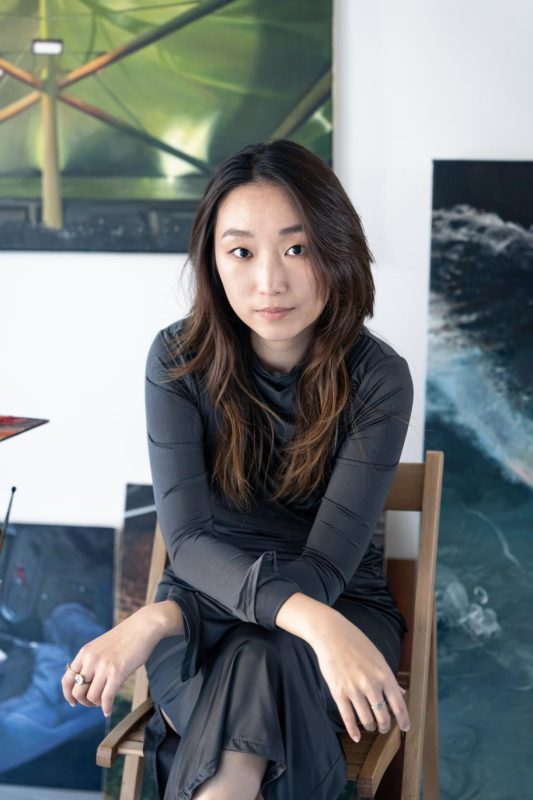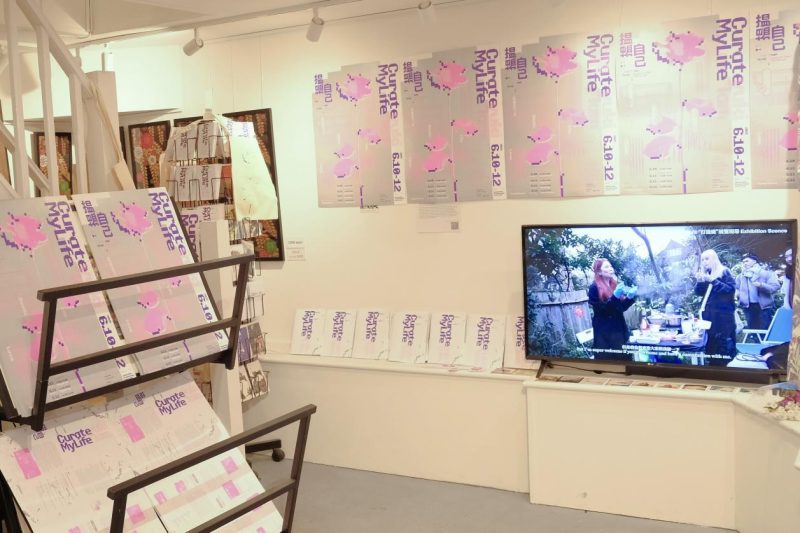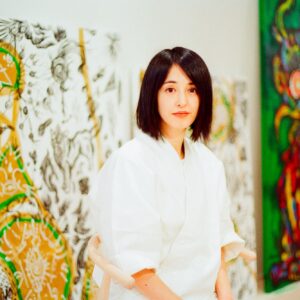
At a time when contemporary textile practices often succumb to either decorative nostalgia or hyper-digital spectacle, Yang Yumeng’s “Dining with Me” (2023–24) offers a refreshingly intimate, materially astute intervention.

Debuted at The London Group Open 2023 and subsequently as a New Talent Artists exhibited at London Surface Design Show 2024, Also exhibited in Gli Eroici Four Comtemporary Art Center in Milan during 2024 Milan International art week, the project expands the language of contemporary fiber art by recontextualizing the overlooked rituals of dining into a platform for critical material inquiry and sensory engagement.
As art historian Julia Bryan-Wilson reminds us,
“textile works hold the capacity to register both public memory and private loss.”
Yang’s project precisely operates within this dual register, weaving together environmental ethics, personal memory, and the politics of domestic ritual.
Material and Concept: A Deliberate Refusal of Ornament
At the core of Dining with Me lies a series of handwoven textiles created using organza and silk organzine, dyed with organic food waste—onion skins, avocado pits, pomegranate husks. The chromatic subtleties of these natural pigments avoid spectacle in favor of an elusive, decaying sensuality. The muted palette and fragile structures recall what The Subversive Stitch author Rozsika Parker identified as “the tender resistance of cloth”—a refusal to conform to the polished aesthetics favored by contemporary market-driven craft.
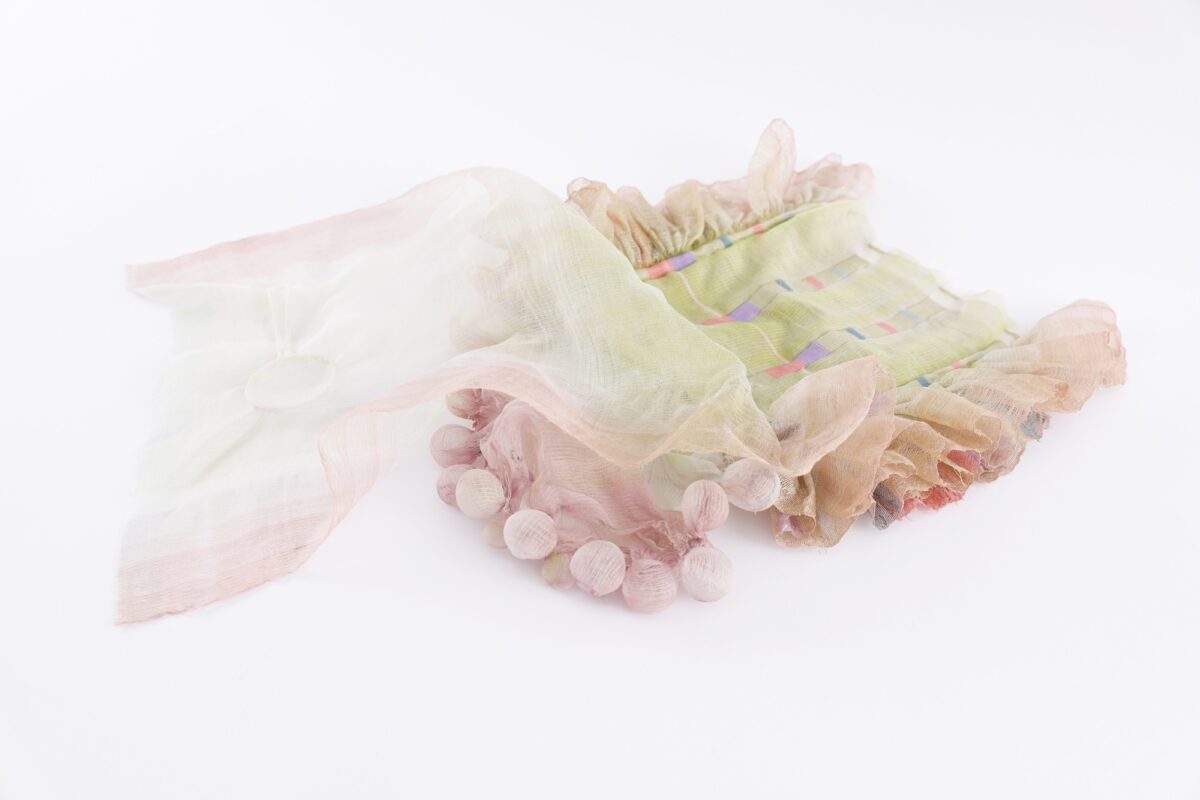
But it is not merely the materials that carry conceptual weight. Yang’s loom setup, deploying a three-beam system for tension manipulation and shibori resist methods shaped with 3D-printed molds, orchestrates a technically complex structure that denies visual regularity. Folds, puckers, and irregular surfaces resist invisibility, foregrounding labor and imperfection. Yang’s textiles do not offer comfort; they insist on the audience feeling the tension between touch, memory, and waste. The work’s fragility is its defiance.
Ritual as Critical Framework
Conceptually, Dining with Me transforms an everyday act into a speculative archive. Through the tactile language of cloth, Yang reconstructs the sensory rituals of preparing, sharing, and clearing a meal—acts often rendered invisible in both domestic and art historical narratives.

What is particularly compelling is Yang’s subversion of the dining table as a site of social control and gendered labor. Where modernist textile works such as those of Anni Albers celebrated order and surface beauty, Yang’s pieces instead stage unruliness and incompletion. Wrinkled textiles hang not as
perfect backdrops but as witnesses to absence—the absent diners, the
unspoken conversations.
Audience Reception and Critical Impact
First exhibited at Copeland Gallery, London, the installation’s understated physical presence belied its conceptual force. Several visitors, according to gallery reports, described the work as “eerily intimate” and “unsettlingly tender.” Its subsequent showing at Surface Design Show 2024 broadened its audience to design professionals, prompting debate over whether textile works should prioritize functionality or conceptual critique.
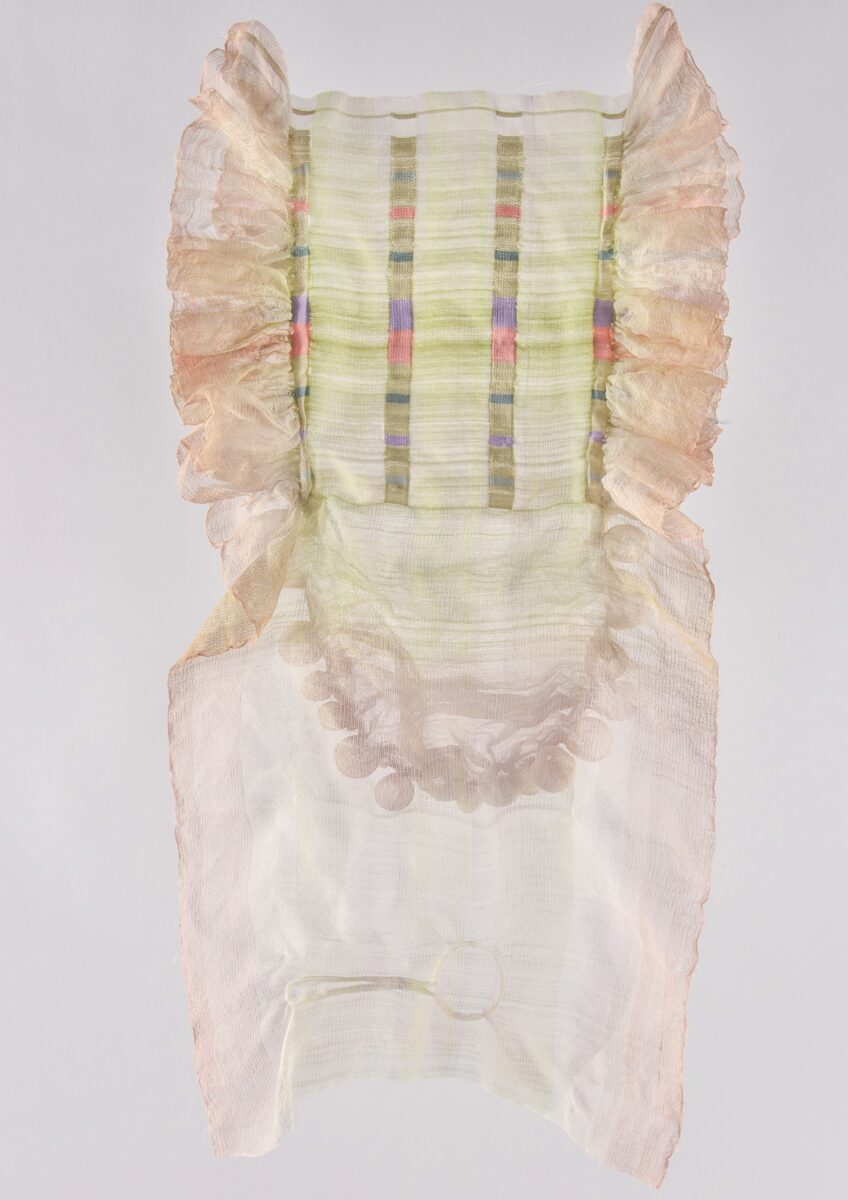
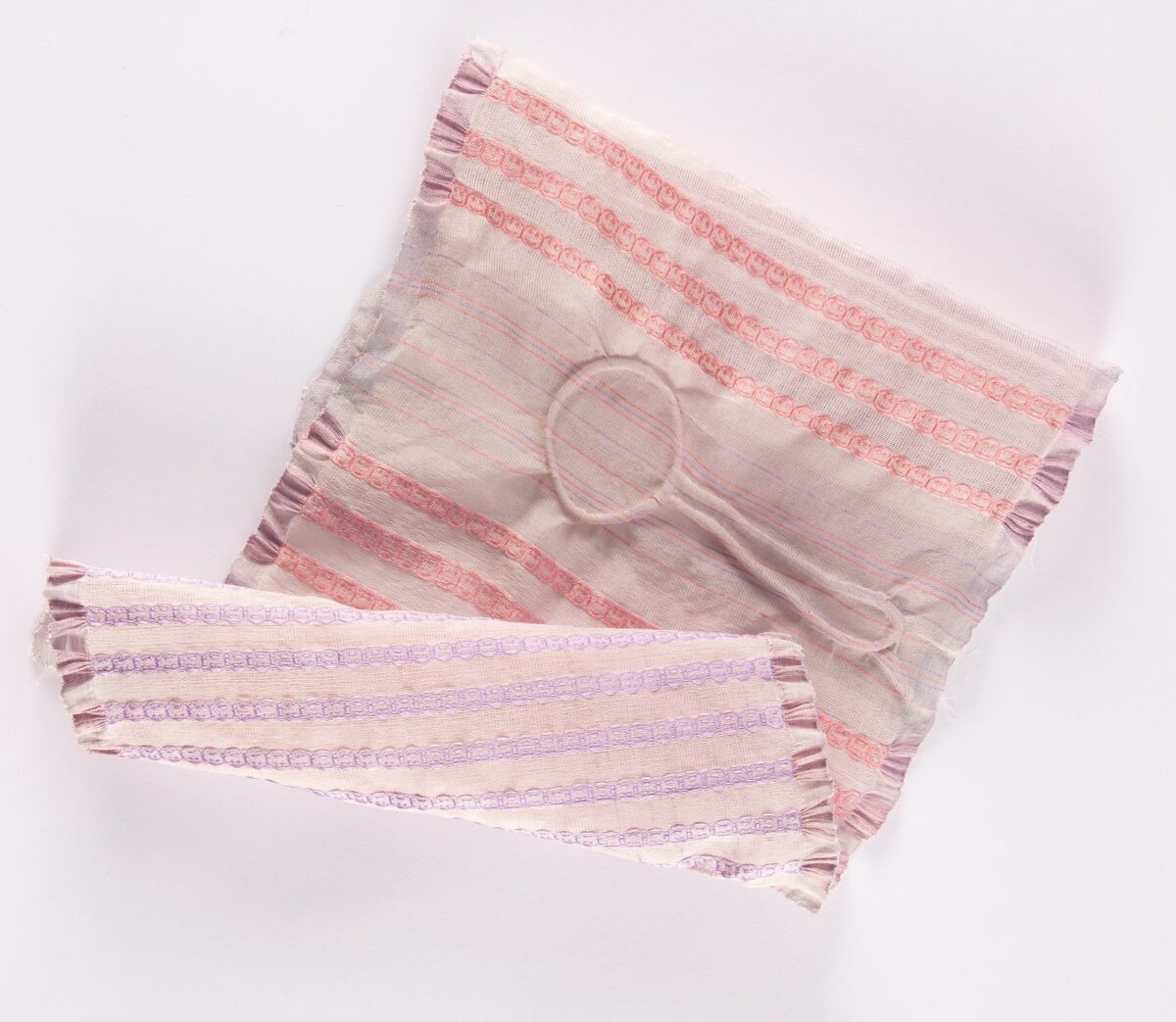
“Yang Yumeng’s work deliberately unsettles easy categories: it is neither craft nor fine art, neither domestic nor monumental. It instead occupies the unstable terrain between utility and critique, a terrain increasingly vital for contemporary textile practices.”
Future Relevance and Critical Risks
While Dining with Me succeeds in subverting aesthetic expectations and reactivating textile’s sensory politics, one might question whether the work risks aestheticizing its own critique. By employing delicate, softly tinted materials, it flirts with the seductions of beauty it seeks to destabilize.
“There is a thin line between sensory provocation and preciousness. For Yang’s practice to maintain its critical edge, future projects must continue interrogating the structures that render labor and ritual invisible, resisting the temptation of turning fragility into commodity.”
Yet it is precisely this precarious balance that lends Yang’s work its conceptual tension. Dining with Me is not a comfortable exhibition; it is a slow, unfolding proposition about the politics of everyday gestures and the ethics of artistic materiality.
In Dining with Me, Yang Yumeng has produced a quietly radical contribution to contemporary textile art—one that refuses to romanticize tradition while rigorously interrogating the ethics of making, memory, and waste. Its strength lies in its material subtlety, conceptual clarity, and its willingness to remain unresolved. As the field of fiber art increasingly reclaims the domestic and the discarded, Yang’s voice emerges as one of its most lucid and necessary provocations.
